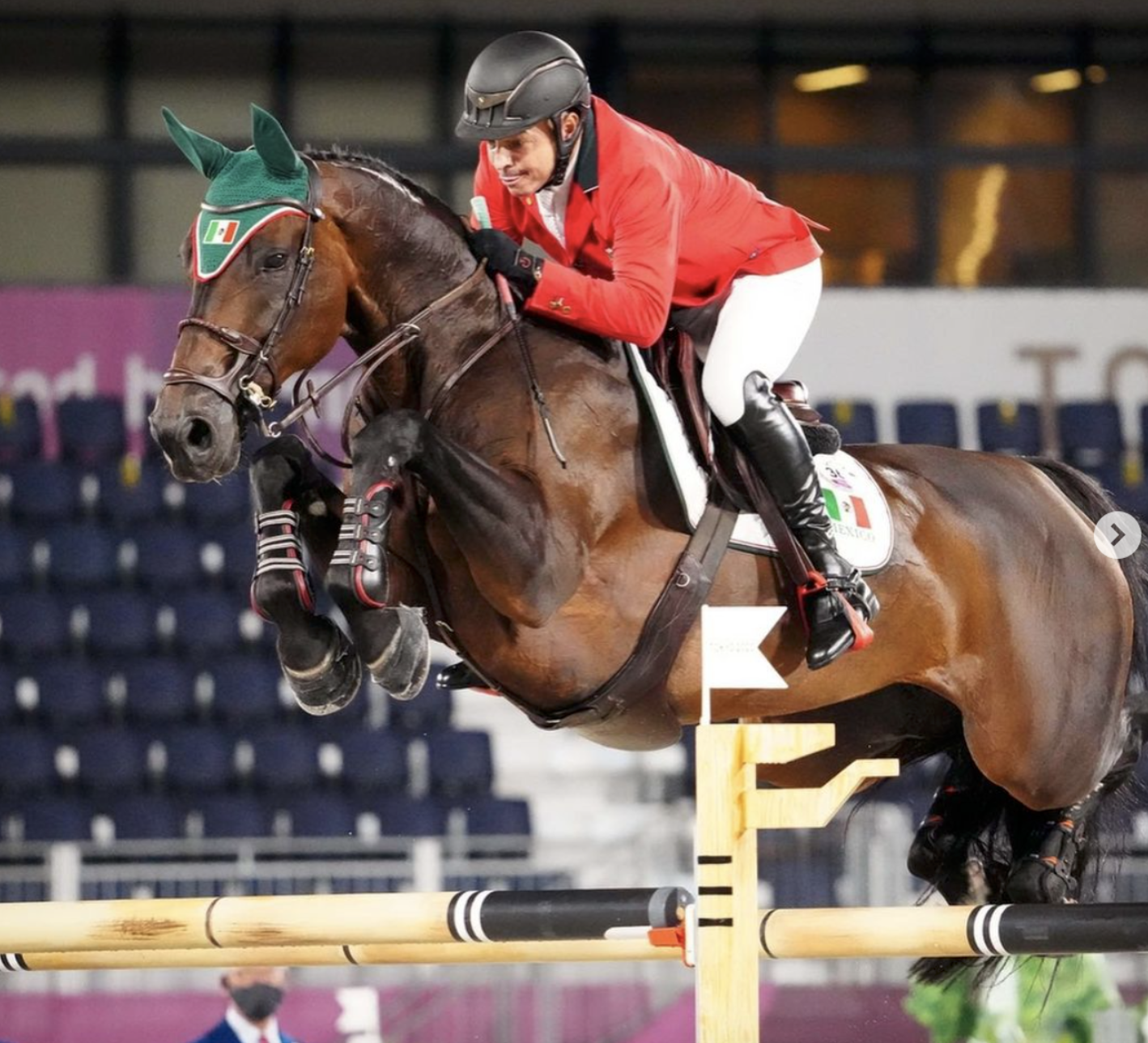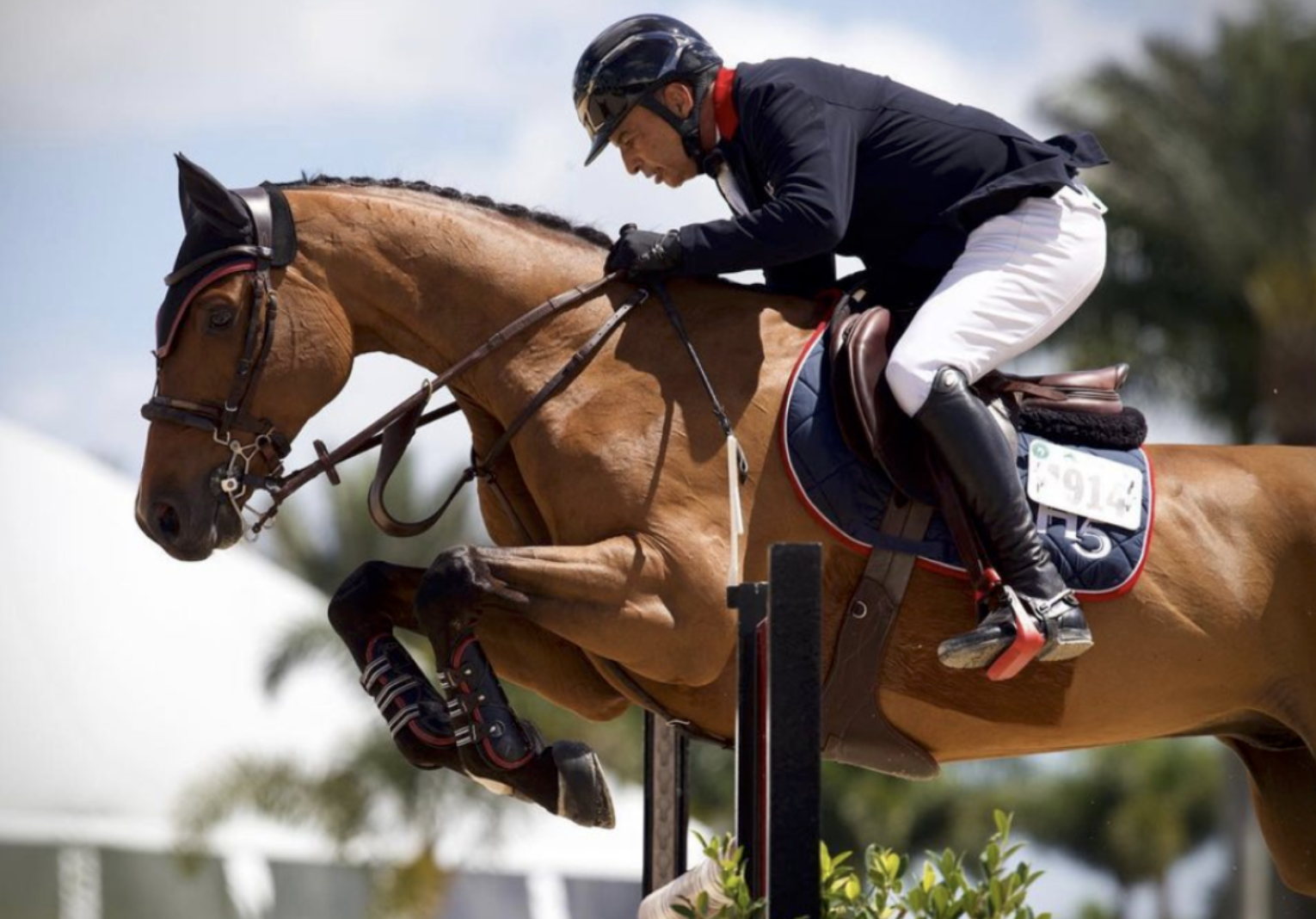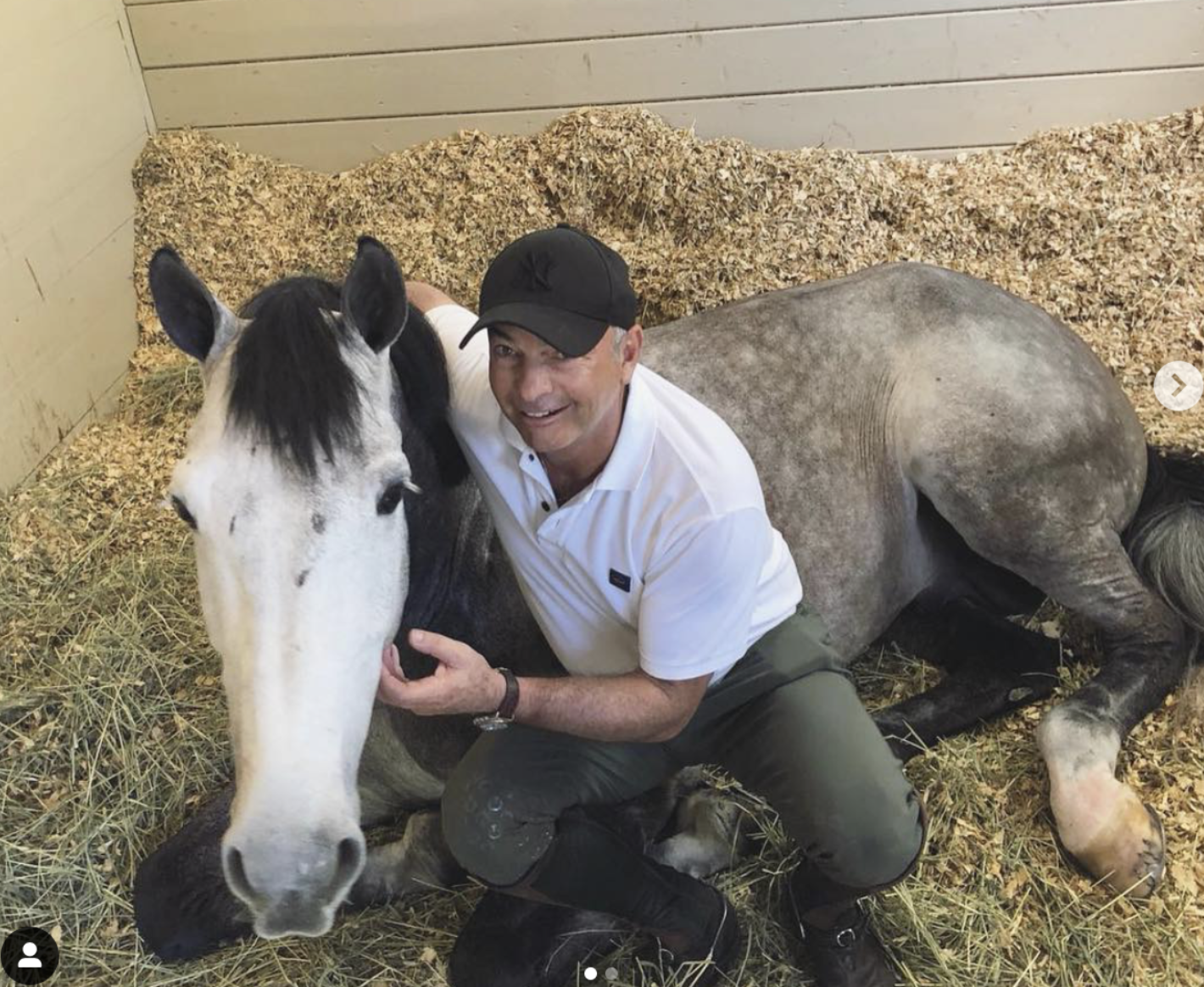
Enrique Gonzalez on Show Jumping Competitions
Blog
Enrique Gonzalez on Show Jumping Competitions
Enrique Gonzalez of E2 Stables in San Diego, California is consistently a top rider in show jumping competitions around the world. He and Chacna, his 2007 Hanoverian mare, represented Mexico at the Tokyo Olympics, where they placed 44th in the individual qualifier in a strong field.
His ability to find prospective horses, educate them, and compete at the highest level has earned widespread respect throughout the industry. Enrique’s show jumping competition resume is brimming with top rides on exceptional athletes over his multi-decade career. In this final article of our three-part series, he discusses competing in show jumping with horses he’s purchased and trained.

Chacna and Enrique at the Tokyo Olympics. (Photo: Sportfot)
The First Competition
After finding a prospective horse and investing in their training, the next step is competition. The patience and discipline developed in the education phase of the process must be part of the competition phase as well. It’s also important to remember that jumping at home is different than jumping at a competition, and the horse must be carefully prepared to have a successful outing at a horse show, followed by a long and successful career.
“Horses tell you with their attitude when they are ready for the show,” Enrique says. “Normally we do some training shows before going to an official show, some horses take it very good and right away they love showing, some are shyer when they get to the show with the ambiance, and more unknown horses around, but that is normally gone after couple shows. Also, the stress of shipping in the truck makes showing a big new experience for them.”
Enrique always recommends starting new or young horses at a training or local show before going to an official show. Usually, the shipping distance is less, fewer horses are competing, and it lacks the stress and electric atmosphere of a rated show. At the smaller shows, the same patience and discipline that helped the horse progress through their education can give the horse positive experiences at the show and help them progress up to larger, rated shows.
At the Show
Anytime something is different the horse is going to be a little tenser and won’t perform the way they do at home. A good rider and trainer work through the tension at the show with the horse and still gets the best performance possible. Horse shows add many new variables and stressors for a horse at the same time. Knowing your horse and what might bother them and what will go unnoticed is important to ensure they have a positive experience. Riders must be patient with the horses as they work through any fear and develop the ability to focus on the rider and round despite the other distractions.
Riders must develop a feel for their horses to make sure they are performing at their best in a competition. “If you learn how to feel and read your horses, you can immediately feel when they are not feeling well or something is stressing them,” Enrique says. Then, make adjustments based on that particular horse and what you know works for them.
Feeling is developed at home, while educating the horse, and then it is enhanced as you work through new challenges on the show grounds and in the ring. For example, the first time showing at night under lights creates tension for some horses. Changes or improvements to the show grounds or facilities could also give them a reason to pause. Time spent riding, training, and caring for the horse helps develop that feeling needed to read the horse and how they are handling a situation.

Enrique and Centarew. Monica Decima Photography
Horses competing well and developing through the levels will progressively see bigger classes with higher jumps and tougher competitors. Alter preparation for these bigger classes to help the horse have the best performance possible. One example is getting to a show earlier and giving the horse more time to acclimate to the grounds and atmosphere. Enrique gives horses plenty of time in the education phase before competition. Horses can also spend extra time at a level of competition as needed.
“When you have a big class coming, you have to train the weak ends of your horse,” Enrique says. “Use gymnastics and poles on the ground to do repetition on what were the last mistakes at the last show you participated in. Some horses have to keep training in a specific problem and for some, it’s just a matter of keeping them in shape, agile, flexible, and smart.”
Again, it goes back to knowing your horse and educating them correctly with patience and discipline. The education and training completed after the initial purchase is the foundation for the horse, and the trainer continues building on that foundation as the horse refines its skills and improves on its weaknesses.
Nutrition, veterinary, and mental health care remain important parts of ensuring the horse has a successful career. Success at small shows leads to future success, and the rider keeps building their horse up until they are competing at the highest levels. Yes, it takes patience and discipline, but the rewards are certainly worth the work.

Enrique and Parrandero
This is the final article in the series Enrique. You can read about finding prospective horses and educating them in the previous articles.
